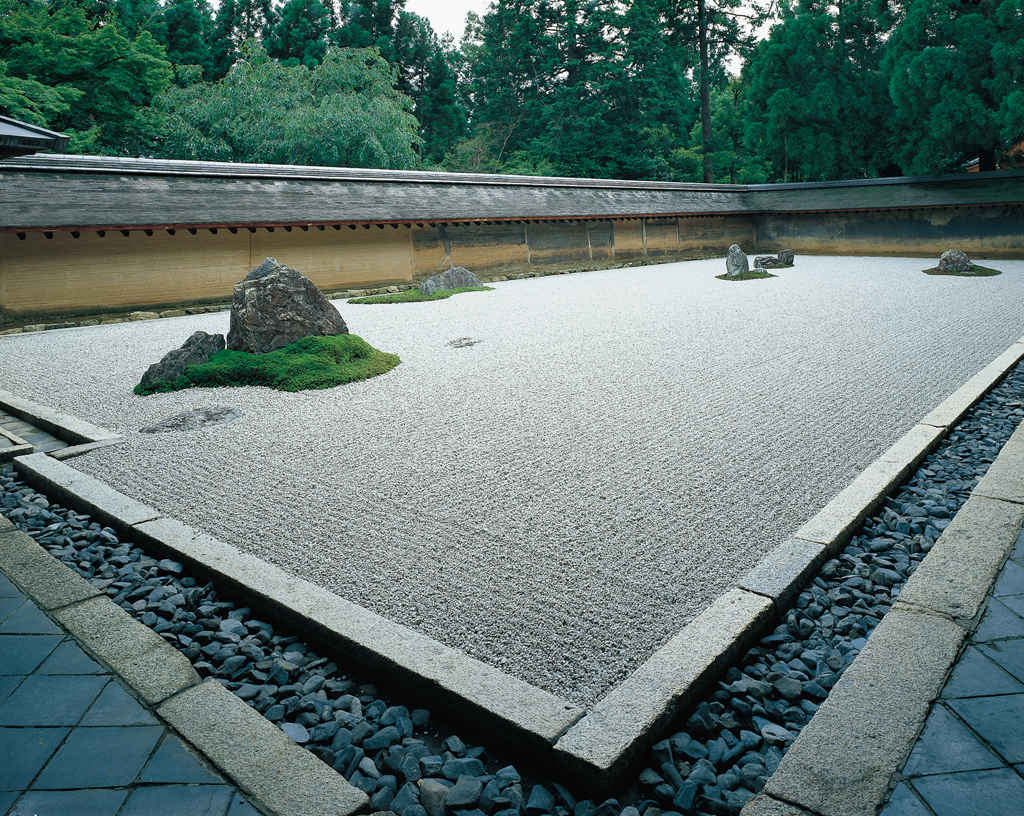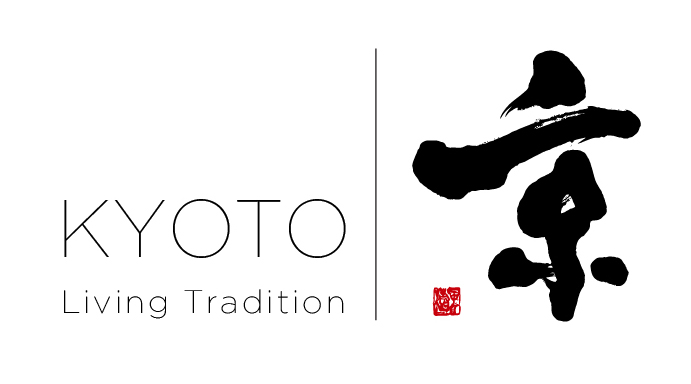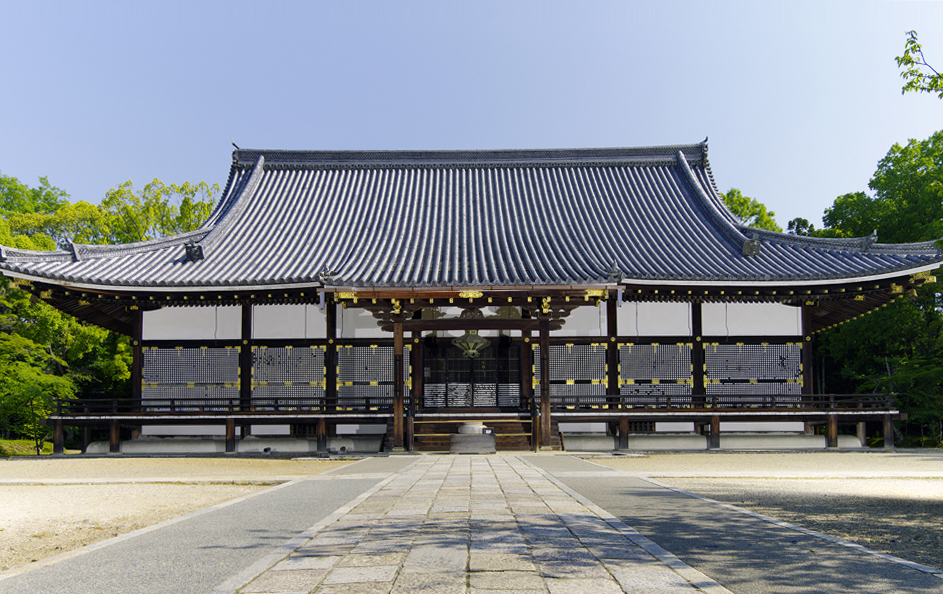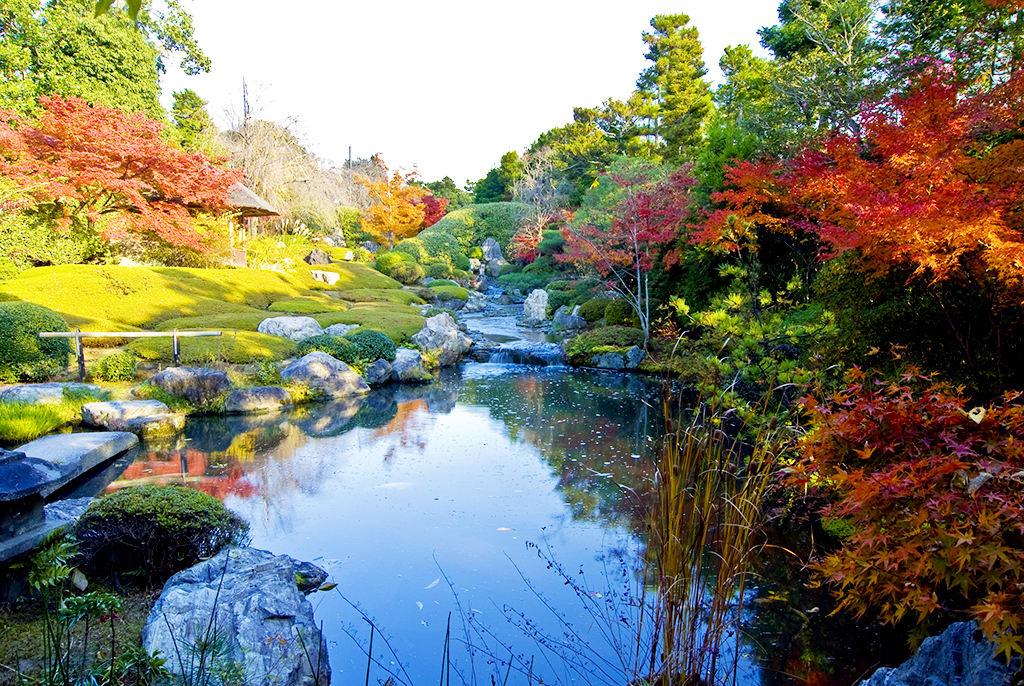
It is Japan’s most famous “hiraniwa” (flat garden void of hills or ponds) and reveals the stunning simplicity and harmony of the principles of Zen meditation.
Ryoan-ji Temple is famous for its mysterious rock garden, the most celebrated in Japan, which defies attempts at explanation. Enclosed by an earthen wall, fifteen carefully placed rocks seem to drift in a sea of raked white gravel. A viewing platform right above the garden gives visitors an unimpeded view, although from whatever angle you view the garden, you can never see all fifteen stones.
After sitting and pondering the garden’s “sermon in stone,” you can stretch your legs by touring the extensive grounds of Ryoan-ji Temple, which includes larger gardens with trees and moss, and the Kyoyo-chi pond, which is particularly striking in autumn. Once refreshed, you can return to the rock garden for another look before leaving.
The temple was built in 1450 by Daimyo Hosokawa Katsumoto (1561-1628), but no one knows for certain when the rock garden was made, who designed it, or what the designer’s intentions were. So what does the rock garden signify? You can only find out by seeing it for yourself.
Basic Information
- Address : 13 Ryoanji-Goryo-no-Sita-cho, Ukyo-ku, Kyoto City
- Website : Click here (Japanese)








